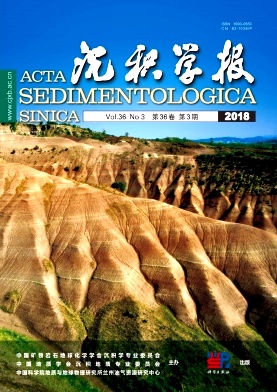Research on Relationship between Characteristics of Deep-water Deposits and Palaeoenvironment in the Ordovician, Pingliang Formation, Southern Margin of the Ordos Basin: A case of Zhaolaoyu countryside, Fuping town, Shaanxi province
doi: 10.14027/j.issn.1000-0550.2018.031
- Received Date: 2017-04-27
- Rev Recd Date: 2017-06-14
- Publish Date: 2018-06-10
-
Key words:
- contourite /
- debrite /
- palaeogeography /
- Ordos Basin /
- Pingliang Formation
Abstract: Deep-water deposits and relationship between palaeogeography is one key point and weak spot of sedimentology. Deep-water deposits well develop in Ordovician of Pingliang Formation in the southern margin of the Ordos Basin. The lithology is mainly micrite, muddy micrite, mudstone and chert in local. Current ripple, small scale of cross bedding, and bioturbation structure are very formed. Three typical lithofacies are interbedded micrite, chert, mudstone and tuff, bioturbated micrite, and massive bedded calcirudyte, corresponding to slope autochthonous deposits, contourites, and debrites, whose geochemical characteristics including δ13C-δ18O,Th-U,Ga-Cu,B-Cr,B-Ga,B-Sr,Ni/Co-U/Th,B/Ga-U/Thand 87Sr/86Sr-Sr/Ba show various. Slope autochthonous deposits and debrites are upwarding decreasing, and the contourites are reverse. The relative sea-level is rising, paleosalinity indicates multi-high to low change cyclicities, paleoclimate changes more and more arid, and reducing action is enhanced during the Pingliang stage. The relative sea-level is rising, paleosalinity change obviously, humid climate, and strong reducing action are helpful to contourites. By contrast, low relative sea-level, arid climate and tectonic movement contribute to debrites.
| Citation: | LI Hua, HE YouBin, HUANG Wei, LIU ZhuRuiZhi, ZHANG Jin. Research on Relationship between Characteristics of Deep-water Deposits and Palaeoenvironment in the Ordovician, Pingliang Formation, Southern Margin of the Ordos Basin: A case of Zhaolaoyu countryside, Fuping town, Shaanxi province[J]. Acta Sedimentologica Sinica, 2018, 36(3): 483-499. doi: 10.14027/j.issn.1000-0550.2018.031 |






 DownLoad:
DownLoad: